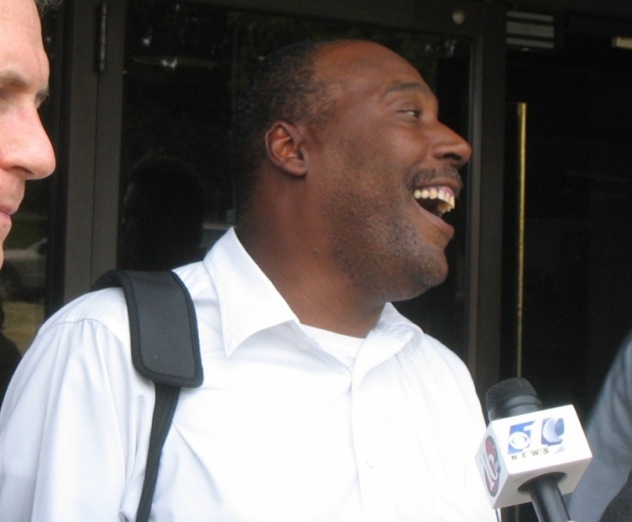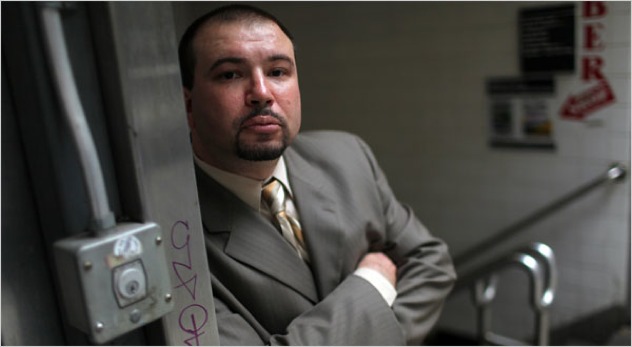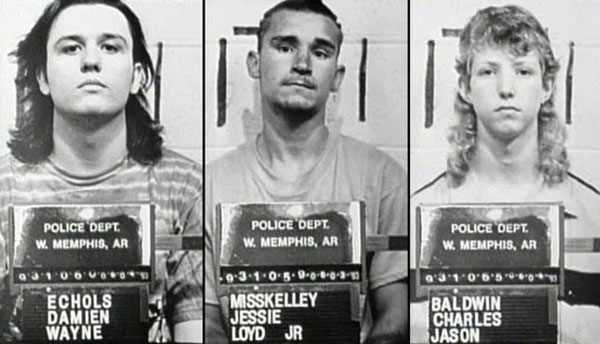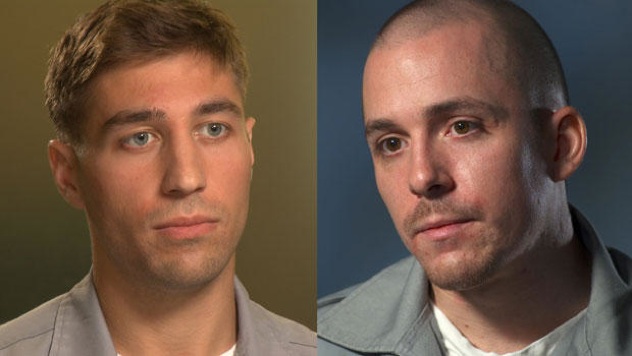 Weird Stuff
Weird Stuff  Weird Stuff
Weird Stuff  Mysteries
Mysteries 10 Tragic Disappearances and Deaths in Joshua Tree National Park
 History
History 10 Ways Childhood Really Sucked in the Old West
 Music
Music 10 Name Origins of Famous Bands from the 1990s
 Religion
Religion 10 Biggest Turnarounds by the Catholic Church
 Weird Stuff
Weird Stuff 10 Unbelievable Times Laws Had Unintended Consequences
 Humans
Humans Ten Historic Women Who Deserve Way More Credit Than They Got
 Movies and TV
Movies and TV 10 Films That Spawned Major Lawsuits
 History
History Ten Times Towns Were Wiped Off the Face of the Earth
 Creepy
Creepy 10 of the Most Disturbingly Haunted Public Houses in the UK
 Weird Stuff
Weird Stuff 10 Niche Subcultures That Are More Popular Than You Might Think
 Mysteries
Mysteries 10 Tragic Disappearances and Deaths in Joshua Tree National Park
 History
History 10 Ways Childhood Really Sucked in the Old West
Who's Behind Listverse?

Jamie Frater
Head Editor
Jamie founded Listverse due to an insatiable desire to share fascinating, obscure, and bizarre facts. He has been a guest speaker on numerous national radio and television stations and is a five time published author.
More About Us Music
Music 10 Name Origins of Famous Bands from the 1990s
 Religion
Religion 10 Biggest Turnarounds by the Catholic Church
 Weird Stuff
Weird Stuff 10 Unbelievable Times Laws Had Unintended Consequences
 Humans
Humans Ten Historic Women Who Deserve Way More Credit Than They Got
 Movies and TV
Movies and TV 10 Films That Spawned Major Lawsuits
 History
History Ten Times Towns Were Wiped Off the Face of the Earth
 Creepy
Creepy 10 of the Most Disturbingly Haunted Public Houses in the UK
10 Controversial Convictions Based on False Confessions
One of the biggest causes of wrongful convictions is the false assumption that no one would ever confess to a crime they didn’t commit. When law enforcement officials are under great pressure to solve a case, finding the right perpetrator can become a secondary priority and if necessary, they will use coercion and intimidation to obtain a confession from a suspect. After being subjected to many hours of interrogation, suspects can reach a breaking point where they ultimately decide to tell the authorities what they want to hear. Sometimes, the suspect does not even have the mental faculties to understand the ramifications of what they’re doing. Even when there is no other evidence that a suspect committed the crime, a confession can still be enough to compel a jury to vote “guilty”. Here are ten controversial cases where a conviction was made possible by a very questionable confession.

New York City experienced one of its most infamous crimes on April 19, 1989 when a 28-year old woman named Trisha Meili was raped and severely beaten while jogging through Central Park. The attack left her in a coma and she had no memory of the incident after she recovered. Five Harlem youths – Anton McCray, Kevin Richardson, Raymond Santana, Yusef Salaam, and Kharey Wise—had been in the park the night of the attack and were brought in for an interrogation. With the exception of Salaam, they would each make videotaped confessions to the crime. The Central Park Five were all tried and found guilty and given sentences ranging from five to thirteen years.
However, all five youths would recant their confessions and claim they had been coerced and intimidated by the police. Their statements were not consistent with the physical evidence and the prosecution downplayed the fact that none of the DNA from the crime scene matched them. In 2002, the DNA did wind up matching a convicted serial rapist named Matias Reyes, who finally admitted to the crime and confirmed that he did it alone. By that time, the Central Park Five had already served their sentences and been forced to register as sex offenders after being released. On the basis of Reyes’ confession, their convictions were officially vacated.

On July 8, 1997, a Norfolk, Virginia woman named Michelle Moore-Bosko was found raped and murdered at her residence. A neighbor named Danial Williams and his roommate Joseph J. Dick, Jr. were soon brought in for questioning and confessed to the crime. Since no trace of their DNA was found at the scene, police were forced to look for other suspects, and Dick eventually named two more accomplices, Derek Tice and Eric C. Wilson, who subsequently confessed to being involved. Williams, Tice and Dick were sentenced to life imprisonment while Wilson received 8 ½ years. All four men claimed that they only confessed and pleaded guilty after being threatened with the death penalty.
The separate confessions of the Norfolk Four all seemed to contradict each other in their details, and naval logs showed that Dick was serving on the U.S.S. Saipan at the time of the murder. An inmate named Omar Ballard eventually confessed to committing the murder on his own and his DNA was present at the crime scene. However, the Norfolk Four remained incarcerated since police still maintained that they acted as Ballard’s accomplices. Wilson was released after serving his sentence, and Tice, Williams and Dick would receive conditional pardons from Virginia governor Tim Kaine in 2009. However, the Norfolk Four are still required to register as sex offenders and they continue to fight to clear their names.

It’s bad enough when a coerced confession sends an innocent person to prison, but it’s especially horrific when it sends them to death row and almost costs them their life. On June 4, 1982, 19-year old Rebecca Lynn Williams was raped and stabbed to death 38 times inside her Culpeper, Virginia apartment. One year later, police turned their attention to a farmhand named Earl Washington Jr., who was in custody for another crime. After interrogating Washington for two straight days, he eventually confessed to five different crimes, including Williams’ murder. The other four confessions were thrown out, but he was still sentenced to death for killing Williams.
Washington had an IQ of 69 and was coerced into making all his confessions. His initial confession to the Williams murder was filled with inconsistencies and he got many key details wrong, including the race of the victim and the location of the crime. His execution was ultimately halted when a fellow death row inmate named Joseph Giarrantano contacted a law firm to file a habeas corpus petition on Washington’s behalf. In 1994, Washington would receive clemency from the governor of Virginia and had his sentence commuted to life in prison. It was not until DNA testing proved he wasn’t the perpetrator that Washington was finally granted a full pardon and released after serving 17 years. The real killer of Rebecca Lynn Williams has never been found.

On April 13, 1986, the small town of Aurora, Missouri was shocked when one of its most respected citizens, 79-year old Pauline Martz, was murdered. She had been beaten and burned alive when the killer set her home ablaze. Acting on an eyewitness tip, police were eventually led to a 20-year old resident named Johnny Lee Wilson and after being interrogated for nearly four hours, he confessed to the crime. In order to avoid the death penalty, he would enter an Alford plea and was sentenced to life in prison.
However, Wilson suffered from mild retardation and had an IQ of 76. He was threatened and intimidated by police during his interrogation and thought he would be allowed to go home if he confessed. The details about the murder were clearly fed to him and he seemed unaware of what he was doing when entering his plea in court. Wilson also had an alibi for the time the murder took place and the eyewitness who implicated him was another mentally challenged man who later admitted to lying. A convicted murderer named Chris Brownfield eventually came forward and confessed that he and an accomplice had killed Pauline Martz during a robbery. In 1996, Johnny Lee Wilson was finally granted a pardon by Missouri governor Mel Carnahan and released after serving nine years.

On November 8, 1983, a Fort Lauderdale woman named Susan Hamwi was found stabbed to death with a butcher knife in her home. To make things even more tragic, her 18-month old daughter, Shane, died of dehydration in her crib after being neglected for several days. Police investigated a neighbor named John Purvis, who suffered from schizophrenia and was looked upon as the town “weirdo”. Even though there was no physical evidence linking him to the crime, Purvis would eventually confess to the murder and was sentenced to life in prison.
However, because of his schizophrenia, Purvis had trouble distinguishing fantasy from reality. The first time he was questioned, Purvis’ mother broke up the interrogation when she saw detectives attempting to intimidate her son. The next time they brought Purvis in for questioning, they made sure mother wasn’t present and he was coerced him into making a taped confession. While Purvis was in prison, authorities seemed disinterested in pursuing other potential leads that popped up. The investigation was not reopened until 1992 when evidence came to light that Hamwi had been murdered by two hitmen who were hired by her ex-husband. They would soon be convicted of the crime and in January 1993, John Purvis was finally released after serving nine years.

The Juan Rivera case is a prime example of how much weight a false confession can carry. On August 17, 1992, an 11-year old girl named Holly Staker was raped and murdered while babysitting in Waukegan, Illinois. A tip from an informant eventually led authorities to 19-year old Juan Rivera, who had an IQ of 79 and was in custody on a burglary charge. He was questioned for four straight days and reached the point where he experienced a psychotic episode and started banging his head against the wall. Authorities eventually coerced him into signing a confession and he was sentenced to life in prison for the crime.
In 1998, Rivera received a retrial because his first trial was littered with procedural errors. This time, the prosecution produced one of the kids Staker had babysat as an eyewitness. Even though he was only two years old at the time the murder took place, his testimony helped convict Rivera a second time. In 2005, DNA tests excluded Rivera as the perpetrator and he was granted a third trial. Remarkably, he was found guilty again because the prosecution claimed that Staker had consensual sex with someone else that night… even though she was only 11 years old! It was not until January 2012 that the charges against Rivera were finally dismissed and he was released from prison.

On November 15, 1989, Angela Correa, a 15-year old resident from Peekskill, New York, went missing while on her way to class. Two days later, her body was found in a wooded area. She had been raped, beaten and strangled to death. At her funeral, police noticed that one of her fellow students, 17-year old Jeffrey Deskovic, was crying profusely and became suspicious when they discovered he’d been absent from school during the time Correa went missing. Deskovic was questioned on eight separation occasions, and on January 25, 1990, he was administered a polygraph test without a parent or counsel present and told he had failed. After being interrogated for six hours, Deskovic finally confessed to the murder.
Before the trial, DNA testing was done on semen samples and it excluded Deskovic as the perpetrator. However, the confession strong enough to garner a guilty verdict from the jury and Deskovic received a sentence of 15 years to life in prison. Like the Juan Rivera case, prosecution pushed the theory that the victim had consensual sex with someone else before she was murdered. It would be 16 years before new DNA testing was done and it wound up matching Steven Cunningham, a convicted inmate who was serving time for another murder and subsequently confessed to killing Correa. In 2006, Jeffrey Deskovic was finally exonerated and released.

On September 28, 1973, 51-year old Barbara Gibbons was found murdered at her home in Canaan, Connecticut. Her throat had been cut, she had been sexually assaulted, and there were numerous injuries on her body. Her body was discovered by her 16-year old son, Peter Reilly, but police were suspicious by his supposed lack of emotion and immediately brought him in for questioning. After failing a polygraph test, the exhausted Reilly was interrogated for several hours. He eventually came to believe the police’s assertion that he had blacked out and forgotten he committed the murder, so he signed a confession. Even though Reilly would later recant his confession, he was still convicted of first degree manslaughter and received a sentence of 6 to 16 years in prison.
In 1977, Reilly was granted a new trial after evidence was uncovered that a state trooper had seen him driving his car five miles away at the time the murder was supposedly taking place. The judge decided to clear Reilly of all charges and criticized the authorities’ handling of the case. The state police has always maintained their position that Reilly was the real killer and while he has made many attempts to find out who really killed his mother, authorities have always refused to release their files about the case and Barbara Gibbons’ murder remains unsolved 40 years later.

The town of West Memphis, Arkansas was shaken on May 6, 1993 when the naked bodies of three murdered boys—Christopher Byers, Michael Moore and Steve Branch—were found in a drainage ditch. One month later, police brought in 17-year old Jessie Misskelley, Jr. for questioning, and he eventually confessed that he and two other teens, Damien Echols and Jason Baldwin, had murdered the three boys as part of a satanic ritual. The West Memphis Three were soon charged and found guilty of the murders, with Echols being sentenced to death.
However, Misskelley quickly recanted his confession, which was filled with inconsistencies. He had an IQ of 72 and appeared to have details of the crime fed to him during 12 hours of interrogation. There was no DNA or physical evidence to link the suspects to the crime scene, and more compelling evidence seemed to point towards Steve Branch’s stepfather, Terry Hobbs. The “Paradise Lost” series, a trilogy of documentaries about the case, garnered national exposure for the West Memphis Three and much outrage about their convictions. In 2011, a deal was reached where the West Memphis Three would be released from prison if they entered an Alford plea, officially pleading guilty to the crime while maintaining their innocence. Even though they are now free, they have never been officially exonerated and the real killer of the three boys remains unpunished.

In the early morning hours of November 1, 2001, sports editor Kent Heitholt was beaten and strangled to death with his belt in the parking lot of the Daily Tribune in Columbia, Missouri. The case remained cold until 2004 when a young man named Chuck Erickson told police he believed he had repressed memories of having committed the murder with his friend, Ryan Ferguson. After being interrogated, Erickson was eventually coerced into making a full confession. Ferguson was charged and given a 40-year sentence for the murder while Erickson received 25 years.
However, there was no physical evidence to tie either of them to the crime scene and the validity of Erickson’s confession has been questioned. He was a known drug and alcohol user with a history of mental illness and could not provide accurate details about the murder until they were fed to him by police. The only other piece of evidence was the testimony of a janitor named Jerry Trump, who claimed he saw Ferguson and Erickson in the parking lot that night. However, in 2012, Trump claimed he had been coerced into naming them by the prosecutor, and both he and Erickson would give sworn affidavits recanting their testimony. Even though there is no longer any evidence to tie Ryan Ferguson to the murder, all attempts to secure him a new trial have been unsuccessful and he remains in prison.
Robin Warder is a budding Canadian screenwriter who has used his encyclopedic movie knowledge to publish numerous articles at Cracked.com. He is also the co-owner of a pop culture called The Back Row.








